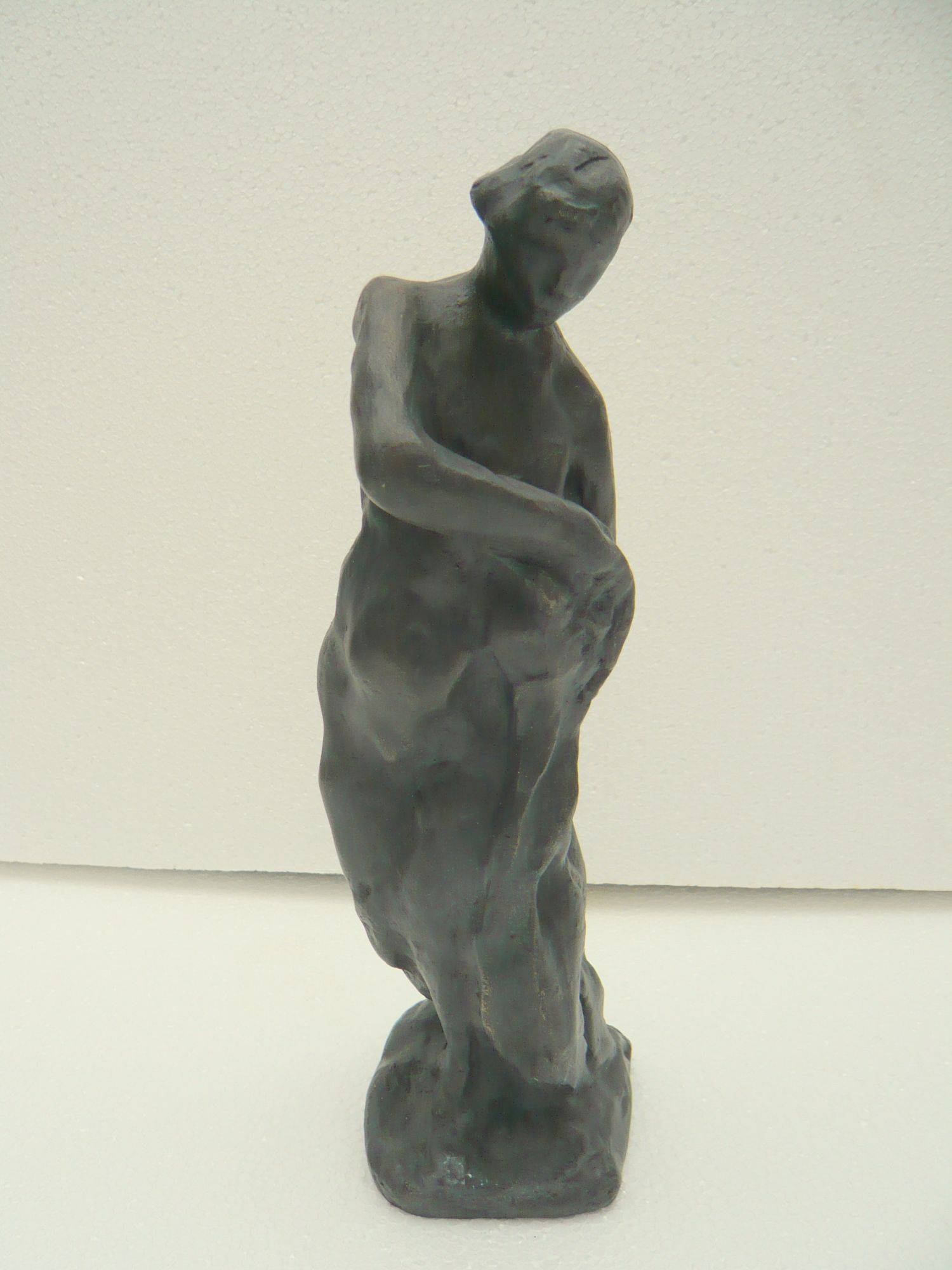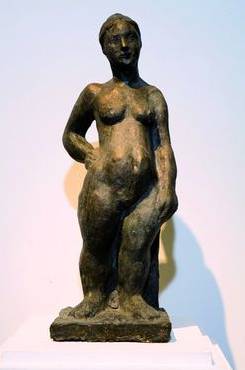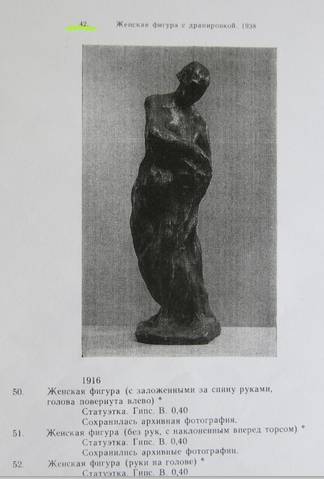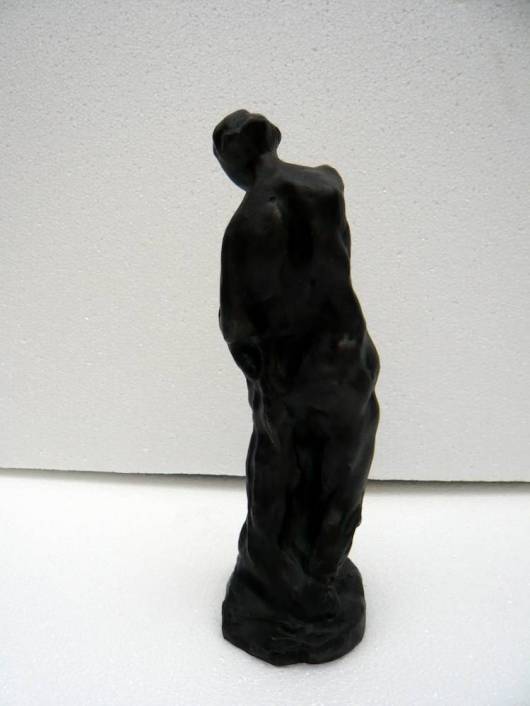Woman turning to her left

Korolev, Boris Danilovich
1884 - 1963
Woman turning to her left
Bronze with dark patina
30cm high
1938
PROVENANCE:
Moscow private collection
LITERATURE:
Certificate from Luidmilla Marts, curator of 20th century sculpture at the Tretyakov Gallery.
B.D. Korolev, Catalogue Raisonee, Moscow, 1989, listed as No. 327, described on p. 298 and illustated on pages 254(front) and 255(back) where dated 1938.
Korolyóv stands at the origins of the Soviet school of sculpture, its mainstream, but he also was one of the leading figures in the avant-garde movement. In 1920s he played a prime role in the realization of Lenin's plan of monumental propaganda. In his own sculptural works Korolyóv combined Realism with elements of Impressionism and Cubism.
Born in Moscow and educated at the Moscow School of Painting, Sculpture and Architecture under Sergei Volnukhin, Korolev was a committed revolutionary, deported twice for his political activity, and a leading figure of avant-garde sculpture in revolutionary Russia.
He was an active participant in the execution of Lenin's Monumental Propaganda Plan of April 1918, which encouraged the destruction of Tsarist monuments and the rapid production of Soviet-themed sculptures and bas-reliefs. Unfortunately Korolev's rapidly produced 1919 concrete statue of Mikhail Bakunin, done in a Cubo-Futurist style and set up in Moscow, proved to be deeply unpopular and was dismantled within weeks.

Boris Korolyov, Standing Nude, 1923.
Despite changing tastes, Korolev continued working in Cubist style into the 1920s, and became professor of sculpture at the Soviet state art school, Vkhutemas. In 2009 he was the subject of a major retrospective at the Tretyakov Gallery.[1]
Korolev is buried in Novodevichy Cemetery[2]
Significant works include:
- the granite Fighters of the Revolution in Saratov, completed in 1925, with a cubist base
- bronze and granite figure of Nikolay Bauman, Moscow, 1931
-
a number of statues of Lenin, including a bronze of Lenin in Independence Square of Tashkent, completed in 1936 and replaced in 1991
- Jump up^ "BORIS KOROLEV. SCULPTURE. GRAPHICS. TO THE 125TH ANNIVERSARY". The State Tretyakov Gallery. Retrieved 3 April 2013.
- Jump up^ "Королев Борис Данилович". devichka.ru. Retrieved 3 April 2013.
- Bol'shaya sovetskaya entsiklopediia (the Great Soviet encyclopedia) (3d ed., vol. 13). (1973). Moscow.: Izdatel'stvo "Sovetskaya Entsiklopediya".
- Grabar, I. (Ed.). (1957). Istoriya Russkogo Iskusstva (The History of Russian Art) (Vol. XI). Moscow: USSR Academy of Sciences.
- Latushkin, A.V. (1986). Pam'yatnik N.E. Baumanu (Monument to N. Bauman in Moscow). Moscow: Moskovskiy rabochiy.
-
Fomina, N.N., Yakhont, O.V. (1989). Korolyov, B.D. Iz literaturnogo naslediya. Perepiska. Sovremenniki o skul'ptore (Korolyóv, B.D. Excerpts from archives and published literary works. Correspondence. Contemporaries on the sculptor. Moscow: Sovetskiy khudozhnik.
Online Biography in Russian http://www.krugosvet.ru/enc/kultura_i_obrazovanie/izobrazitelnoe_iskusstvo/KOROLEV_BORIS_DANILOVICH.html
In Woman Turning to her left Korolyov turns back to the classical tradition that underpins so much of his work with the avant garde in the 1920's. A nude women is depicted turning to her left. The modelling is completely convincing and she is shown in a position familiar from the classical sculptors of ancient Greece.
Woman turning to her left - back view

This bronze illustrated in the Korolev book of 1989.
According to Ludmilla Marts, the sculpture curator at the Tretyakov Gallery, there are four versions of this sculpture:- one in gypsum at the Russian museum, one in bronze at the Tretyakov, one in bronze at the Taganrog museum and our version in bronze.



